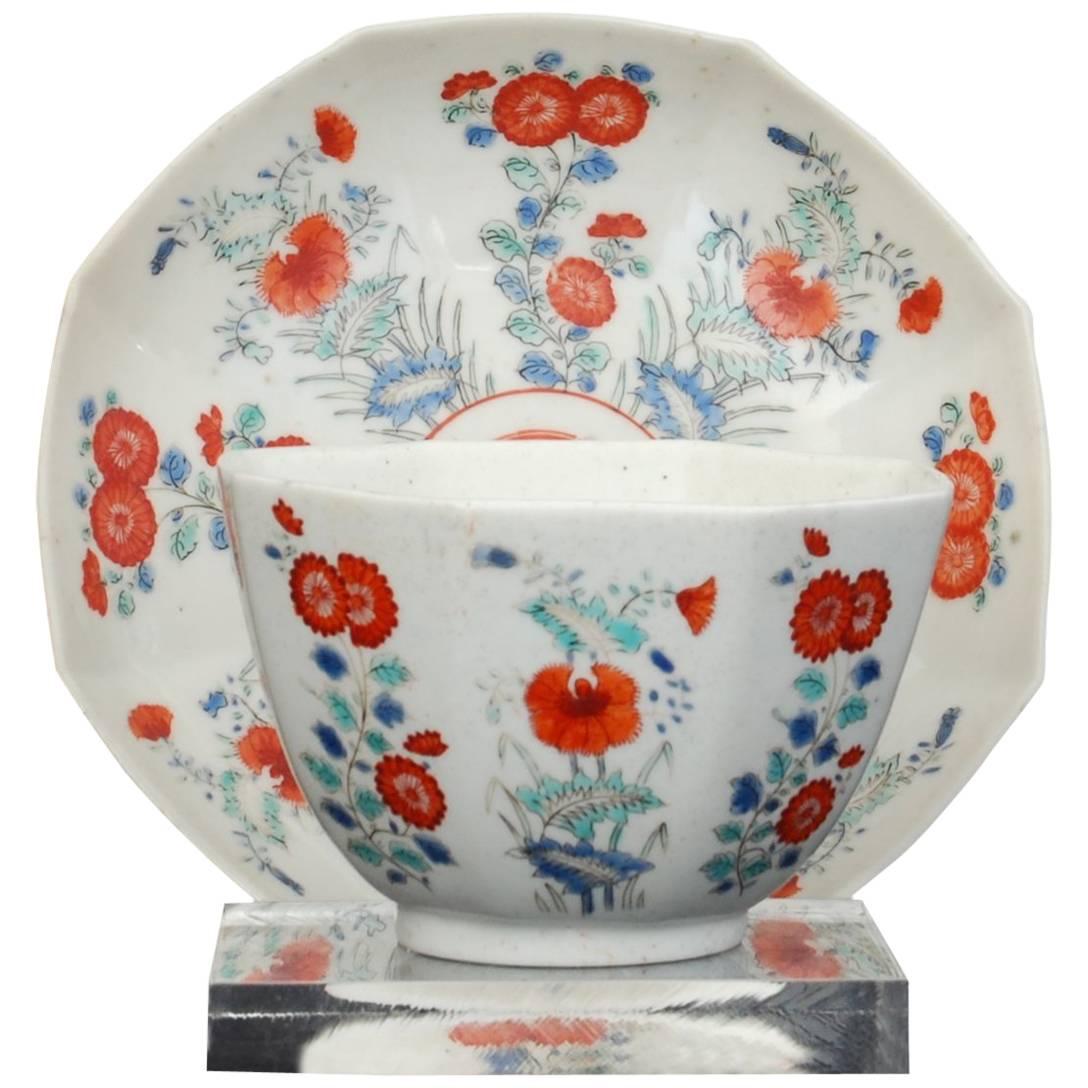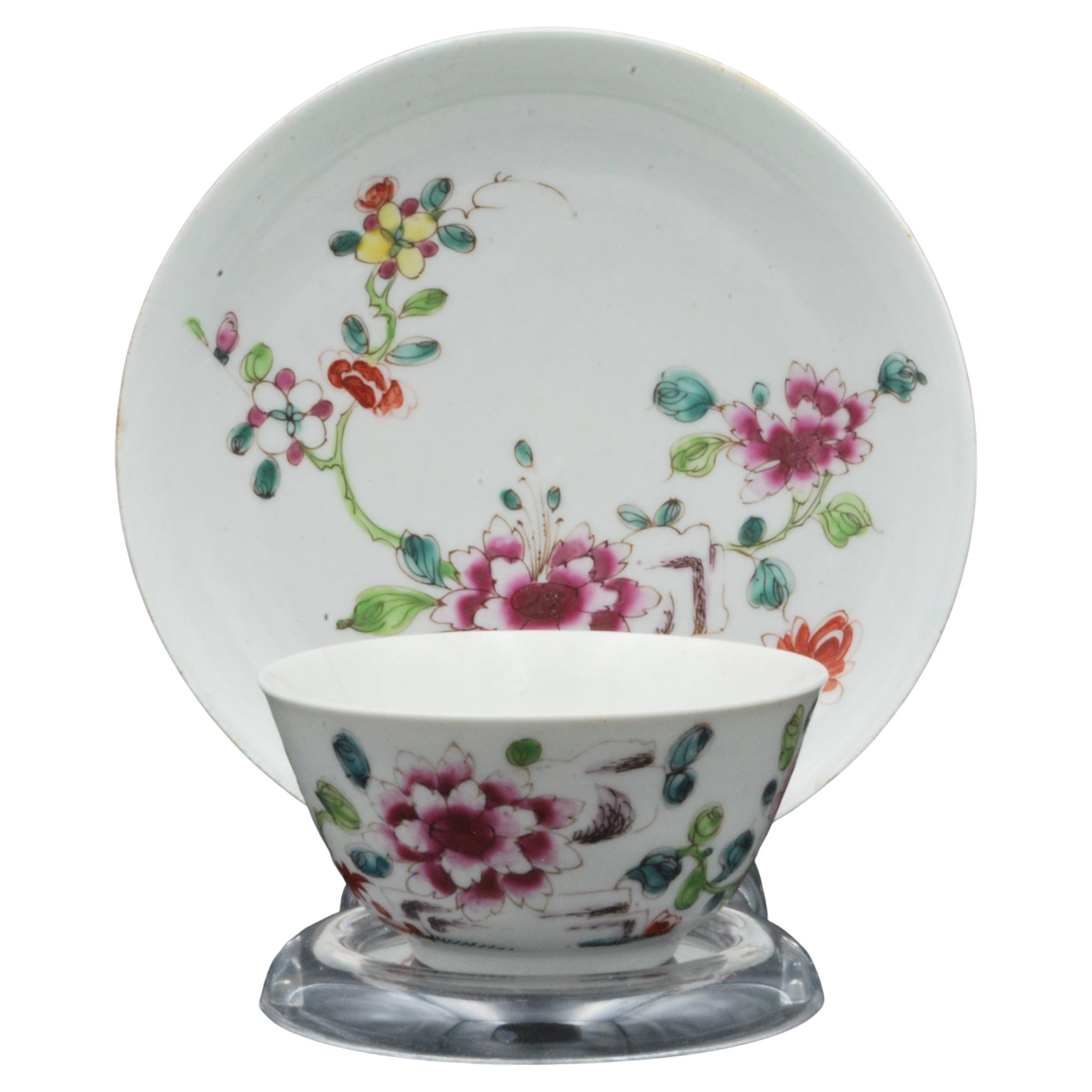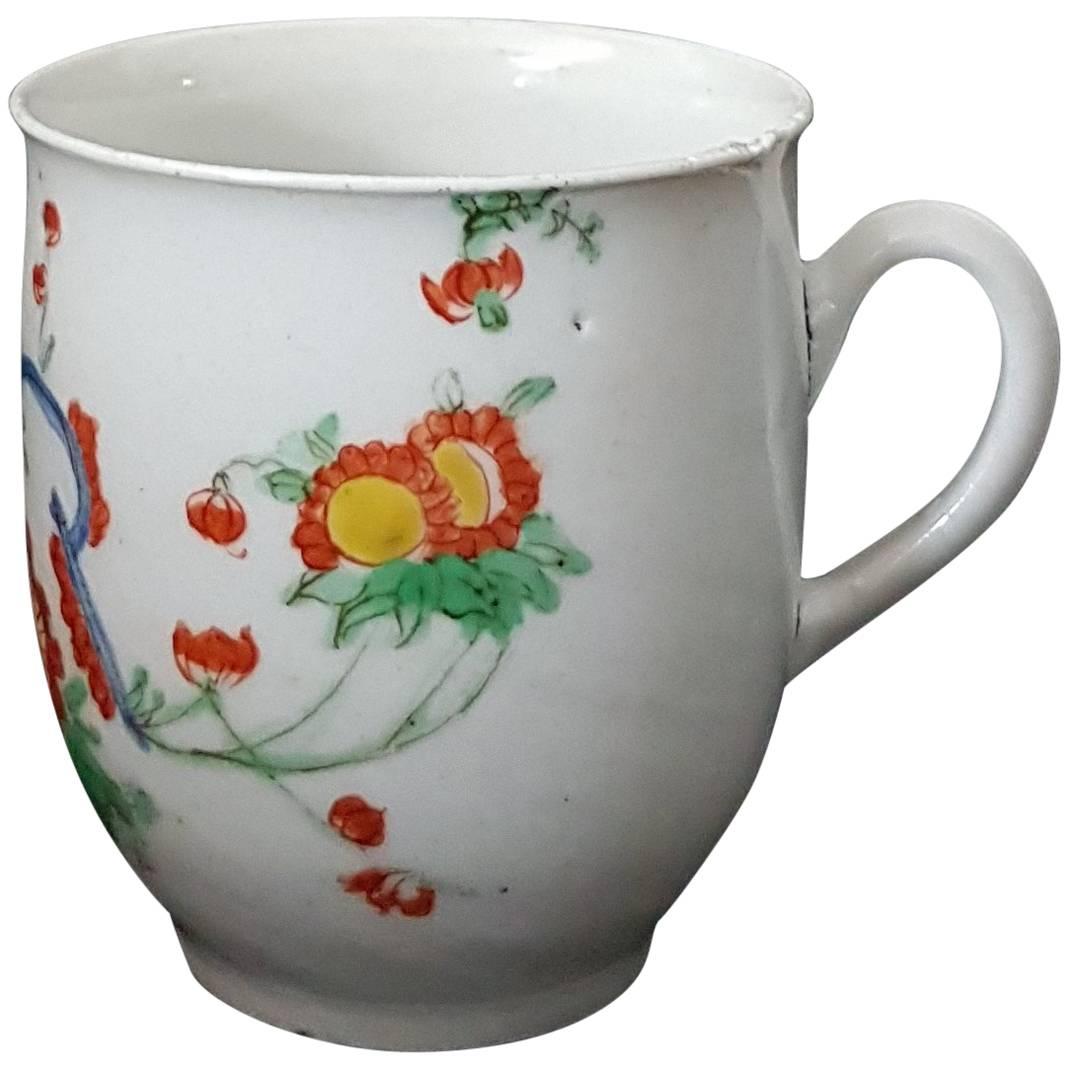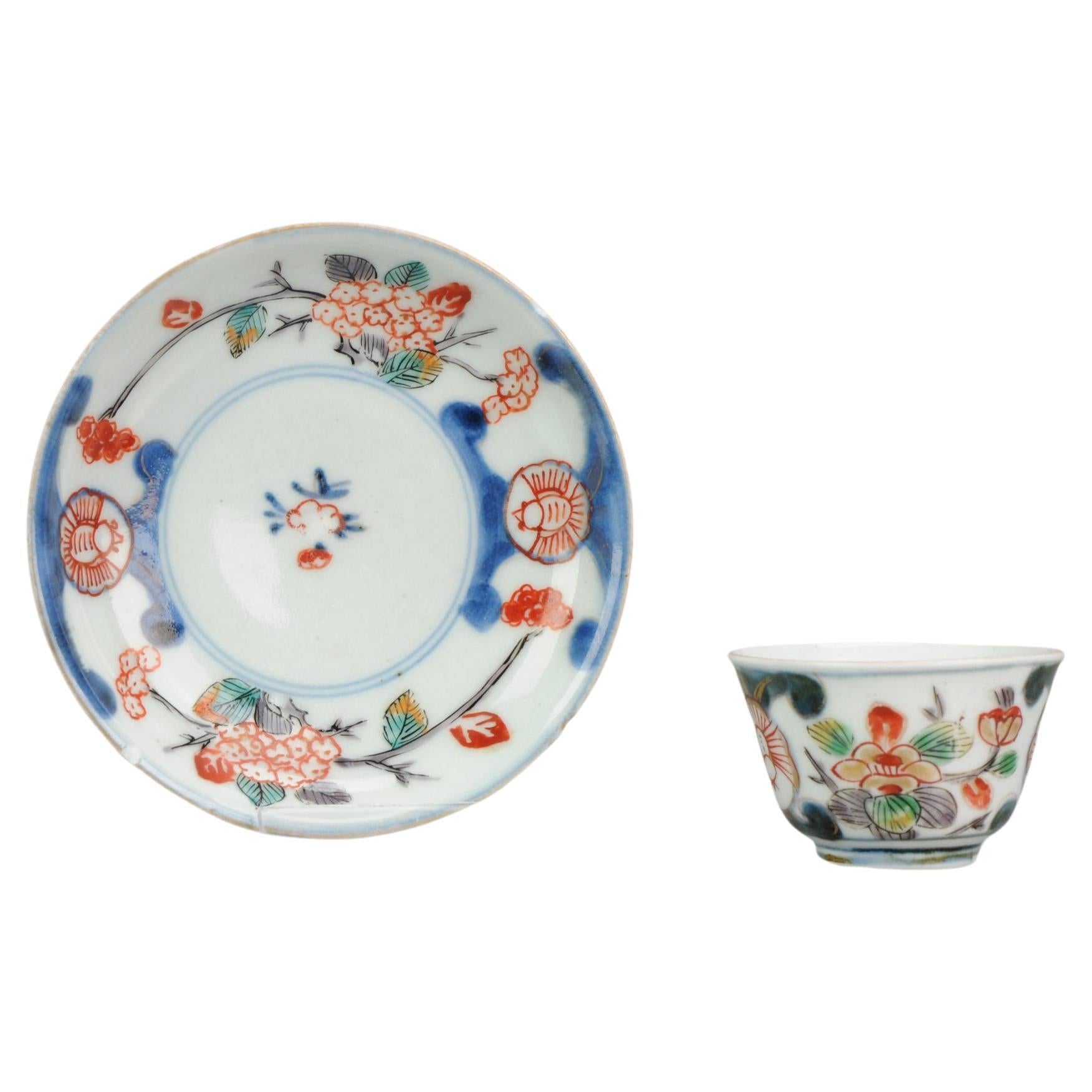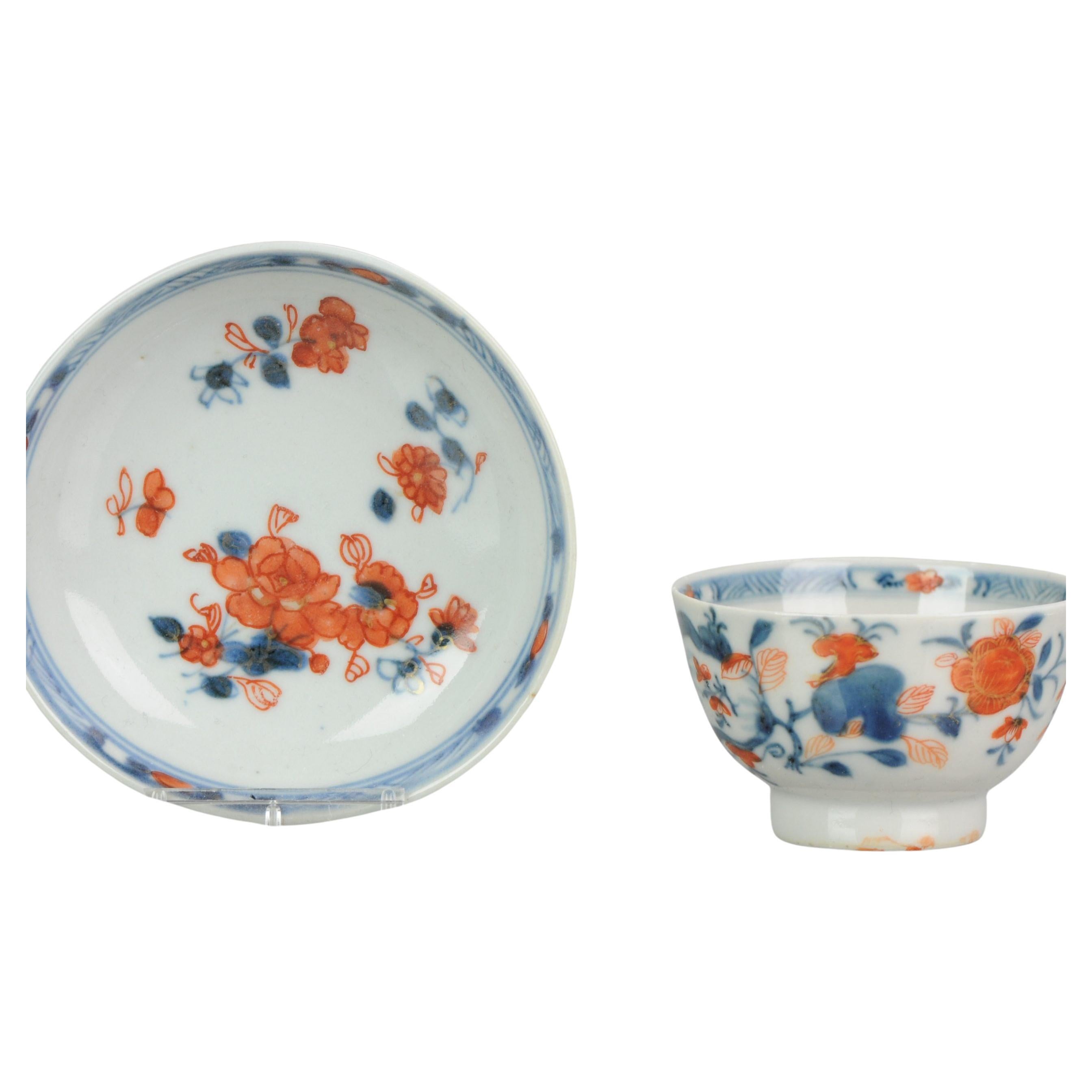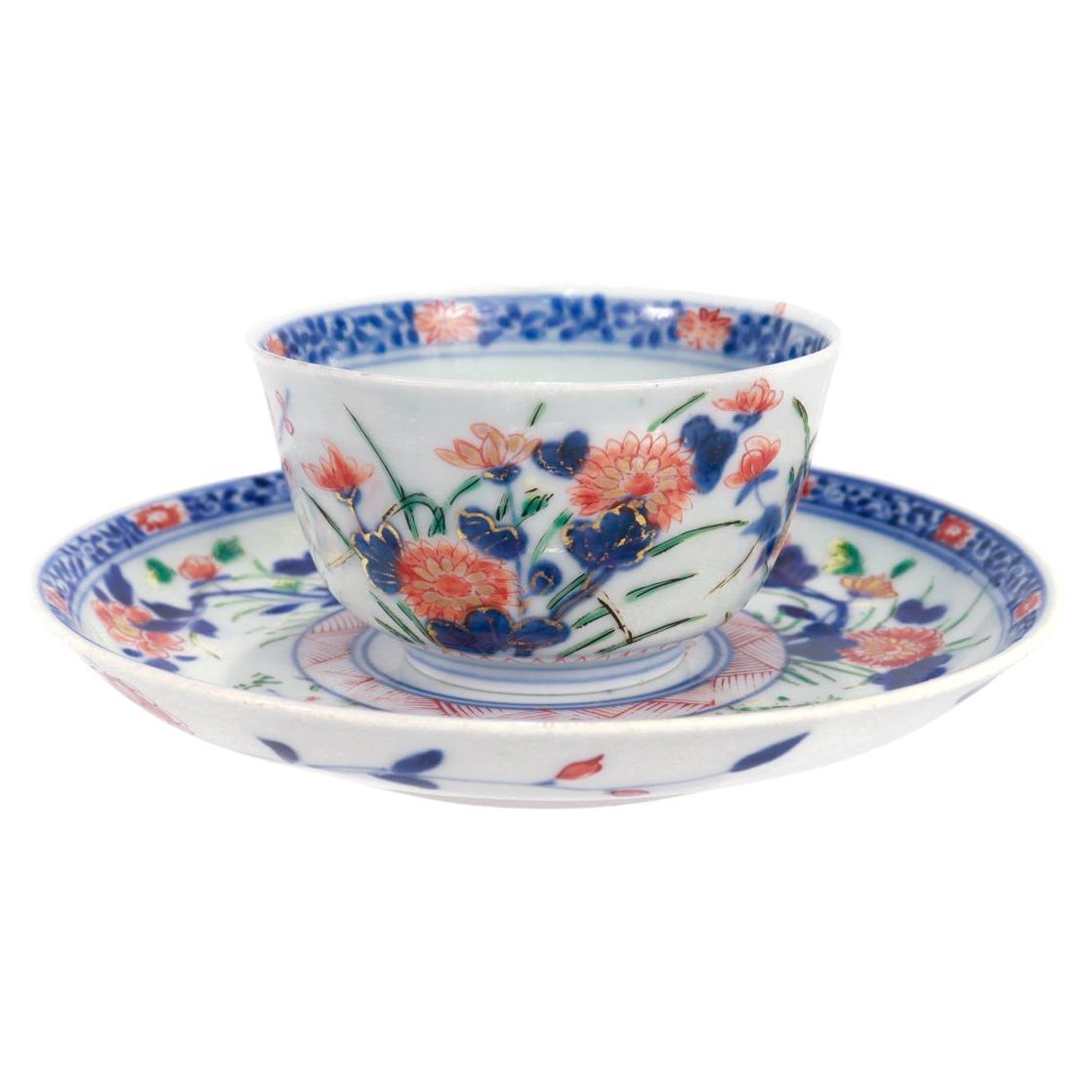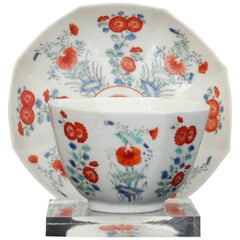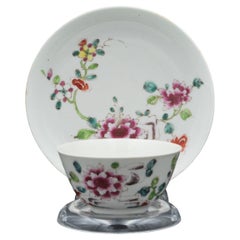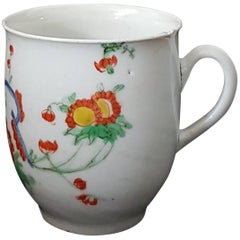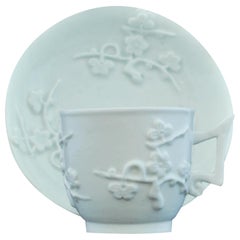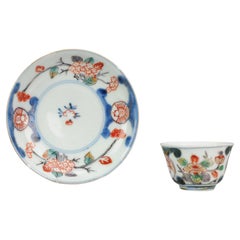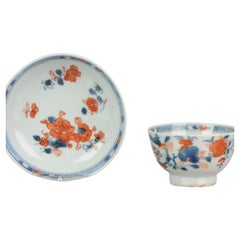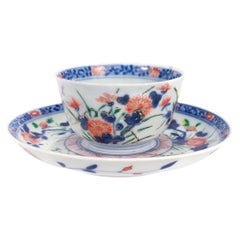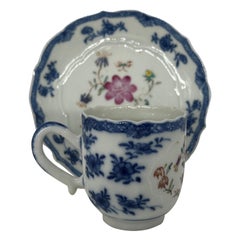Items Similar to Cup and Saucer, Kakiemon Decoration, Bow Porcelain Factory, circa 1753
Want more images or videos?
Request additional images or videos from the seller
1 of 10
Cup and Saucer, Kakiemon Decoration, Bow Porcelain Factory, circa 1753
$2,030
$2,90030% Off
£1,527.05
£2,181.5030% Off
€1,769.01
€2,527.1630% Off
CA$2,861.88
CA$4,088.4030% Off
A$3,182.60
A$4,546.5730% Off
CHF 1,670.44
CHF 2,386.3430% Off
MX$38,810.29
MX$55,443.2730% Off
NOK 21,111.05
NOK 30,158.6430% Off
SEK 19,792.45
SEK 28,274.9330% Off
DKK 13,203.70
DKK 18,862.4330% Off
About the Item
Low tea cup with clip handle with matching saucer, decorated after the Kakiemon with the two quail pattern. An unusual form with scarce decoration.
Provenance: Windsor Antiques; Taylor collection.
- Creator:Bow Porcelain (Manufacturer)
- Dimensions:Height: 10.6 in (26.93 cm)Diameter: 6 in (15.24 cm)
- Style:Japonisme (Of the Period)
- Materials and Techniques:Porcelain,Turned
- Place of Origin:
- Period:
- Date of Manufacture:circa 1753
- Condition:
- Seller Location:Melbourne, AU
- Reference Number:Seller: 50391stDibs: LU3151310702953
About the Seller
5.0
Vetted Professional Seller
Every seller passes strict standards for authenticity and reliability
Established in 2005
1stDibs seller since 2017
79 sales on 1stDibs
Typical response time: <1 hour
- ShippingRetrieving quote...Shipping from: Melbourne, Australia
- Return Policy
Authenticity Guarantee
In the unlikely event there’s an issue with an item’s authenticity, contact us within 1 year for a full refund. DetailsMoney-Back Guarantee
If your item is not as described, is damaged in transit, or does not arrive, contact us within 7 days for a full refund. Details24-Hour Cancellation
You have a 24-hour grace period in which to reconsider your purchase, with no questions asked.Vetted Professional Sellers
Our world-class sellers must adhere to strict standards for service and quality, maintaining the integrity of our listings.Price-Match Guarantee
If you find that a seller listed the same item for a lower price elsewhere, we’ll match it.Trusted Global Delivery
Our best-in-class carrier network provides specialized shipping options worldwide, including custom delivery.More From This Seller
View AllTea Bowl and Saucer, Kakiemon Decoration Chelsea, circa 1752
By Chelsea Porcelain
Located in Melbourne, Victoria
A large octagonal tea-bowl, decorated in the Japanese style.
“The decoration is effective and pleasing, but does not seem to have been very frequently employed” – McKenna.
Pro...
Category
Antique 1750s English Anglo-Japanese Porcelain
Materials
Porcelain
$6,000 Sale Price / set
20% Off
Famille Rose Tea Bowl & Saucer, Bow Porcelain Factory, circa 1755
By Bow Porcelain
Located in Melbourne, Victoria
A delicate tea-bowl and saucer, decorated after the Chinese in the Famille Rose palette. This style of painting, known as 'wet enamelling', is very attractive but quite scarce in Bow...
Category
Antique Mid-18th Century English Chinoiserie Porcelain
Materials
Porcelain
Coffee Cup, Kakiemon Decoration, Plymouth, circa 1769
By Plymouth Porcelain Factory 1
Located in Melbourne, Victoria
Coffee cup in hard-paste porcelain, decorated with Kakiemon painting. The fruits of the Plymouth factory are perhaps the first examples of hard-paste porc...
Category
Antique Mid-18th Century English Japonisme Porcelain
Materials
Porcelain
$1,360 Sale Price
20% Off
Coffee Cup and Saucer in the White, Chelsea, circa 1750
By Chelsea Porcelain
Located in Melbourne, Victoria
A lovely little cup and saucer, decorated with prunus blossom. Cups with this form of handle are rare, but documented.
Raised anchor mark to saucer.
Category
Antique Mid-18th Century English Chinoiserie Porcelain
Materials
Porcelain
$4,125 Sale Price
25% Off
Tea Bowl & Saucer, Chelsea, circa 1752
By Chelsea Porcelain
Located in Melbourne, Victoria
An octagonal tea bowl and matching saucer, decorated with Chelsea's usual beautiful flower painting.
One of the most distinctive features of Chelsea porcelain is its intricate floral painting, which often featured detailed, lifelike renditions of flowers and other botanical subjects. The factory employed skilled artists who were trained in the art of flower painting, and the results have always been highly prized by collectors.
Chelsea porcelain is highly collectible and has a reputation for being of exceptional quality. It is often considered to be among the finest examples of English porcelain...
Category
Antique Mid-18th Century English Neoclassical Porcelain
Materials
Porcelain
Coffee Cup, Bow Porcelain Factory, circa 1749
By Bow Porcelain
Located in Melbourne, Victoria
Of Chinese export form with loop handle; the body imaginatively painted in a bright ‘early blue’ underglaze with pine, rock and bamboo after the Chinese. Yellow tinged body; clear gl...
Category
Antique Mid-18th Century English Rococo Porcelain
Materials
Porcelain
You May Also Like
Antique Japanese Porcelain Cup & Saucer Imari 'Flowers", 18th Century
Located in Amsterdam, Noord Holland
Antique Japanese Porcelain Cup & Saucer Imari 'Flowers"", 18th Century.
Very delicate and nicely painted set.
Additional information:
Material: Porcelain & Pottery
Type: Tea Bowls ...
Category
Antique 18th Century Japanese Tea Sets
Materials
Porcelain
$310 Sale Price
20% Off
Antique Chinese Porcelain Tea Cup & Saucer Imari Qing Period, 18th Century
Located in Amsterdam, Noord Holland
Lovely set from the qing period.
Additional information:
Primary Material: Porcelain & Pottery
Region of Origin: China
Period: 18th century
China Dynasty Period: Qing (1661 – 1912)
Japanese Style...
Category
Antique 18th Century Chinese Qing Tea Sets
Materials
Porcelain
$270 Sale Price / set
20% Off
Antique Japanese Arita Porcelain Handleless Cup & Saucer with Cherry Blossoms
By Arita
Located in Philadelphia, PA
A fine antique handleless cup and saucer.
In Japanese Arita porcelain.
With blue underglaze and cold-painted iron red decoration. Embellish...
Category
Antique 19th Century Japanese Edo Ceramics
Materials
Porcelain
Qianlong Period Chinese Export Porcelain Tea Cup & Saucer - Lotus Underglaze
Located in Atlanta, GA
Chinese, circa 1785.
Chinese export porcelain cup and saucer set produced with blue and white underglaze foliate motifs and geometric designs to edges. The main face of the cup and saucer have polychrome enamel painted flowers and fine quality. This set has a highly unusual raised "lotus"
underglaze surrounding the main floral decoration. Underside is unmarked as appropriate with age.
Produced in the 18th century, Chinese export porcelain was crafted with the same technical virtuosity as Chinese Imperial...
Category
Antique 18th Century Chinese Chinese Export Porcelain
Materials
Porcelain
$1,036 Sale Price / set
20% Off
Set Edo Period Japanese Porcelain Imari Tea Cup & Saucer, ca 1700
Located in Amsterdam, Noord Holland
Lovely set of Japanese porcelain Imari.
Additional information:
Material: Porcelain
Region of Origin: Japan
Period: 18th century Edo Period (1603–1867)
Condition: Perfect
Dimension...
Category
Antique 18th Century Japanese Tea Sets
Materials
Porcelain
$718 Sale Price / set
20% Off
Japanese Porcelain Tea Cup Bowl & Saucer Imari Edo Period, 18C
Located in Amsterdam, Noord Holland
Lovely set from the edo period.
Additional information:
Primary Material: Porcelain & Pottery
Region of Origin: Japan
Period: 18th century
Japan Dynasty Period: Edo Period (1603–186...
Category
Antique 18th Century Japanese Edo Tea Sets
Materials
Porcelain
$179 Sale Price / set
20% Off
More Ways To Browse
Silver Two Handled Cup
England Tea Cup
18th Century Tea Cup
18th Century Cup And Saucer
Windsor Silver
Kakiemon Porcelain
18th Century Bow Porcelain
Antique Tea Cup Collection
Two Quail
Silver Quail
Quail Ceramics
Bow Kakiemon
Limoges Porcelain Gold
Gold Cups And Saucers
Limoges Hand Painted Porcelain
Limoges Signed
Japanese China Set
Japanese Plate Sets
